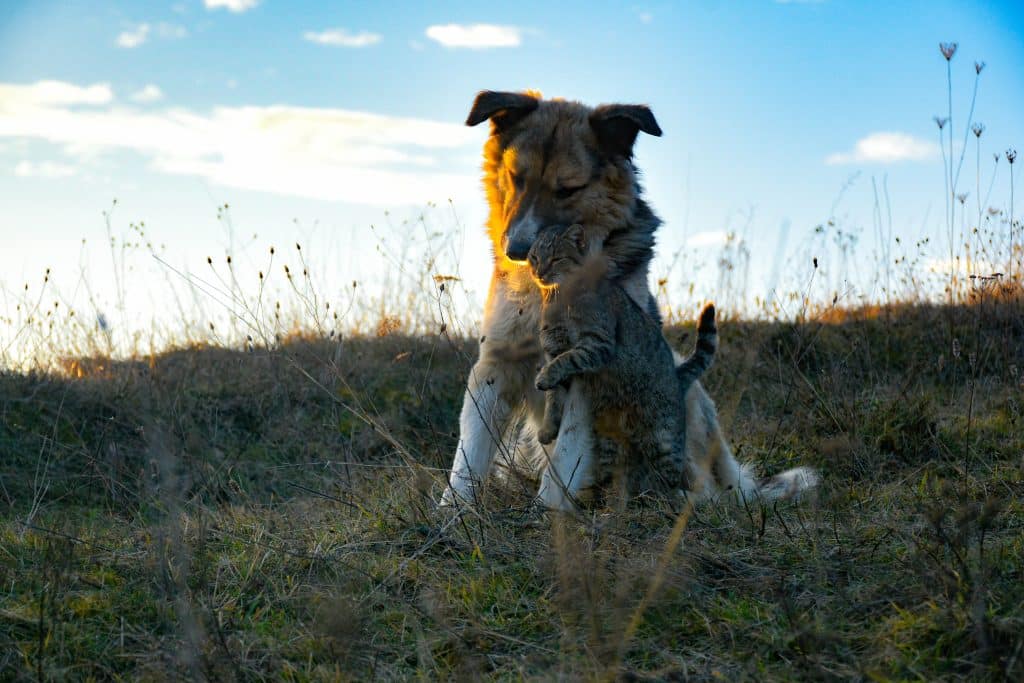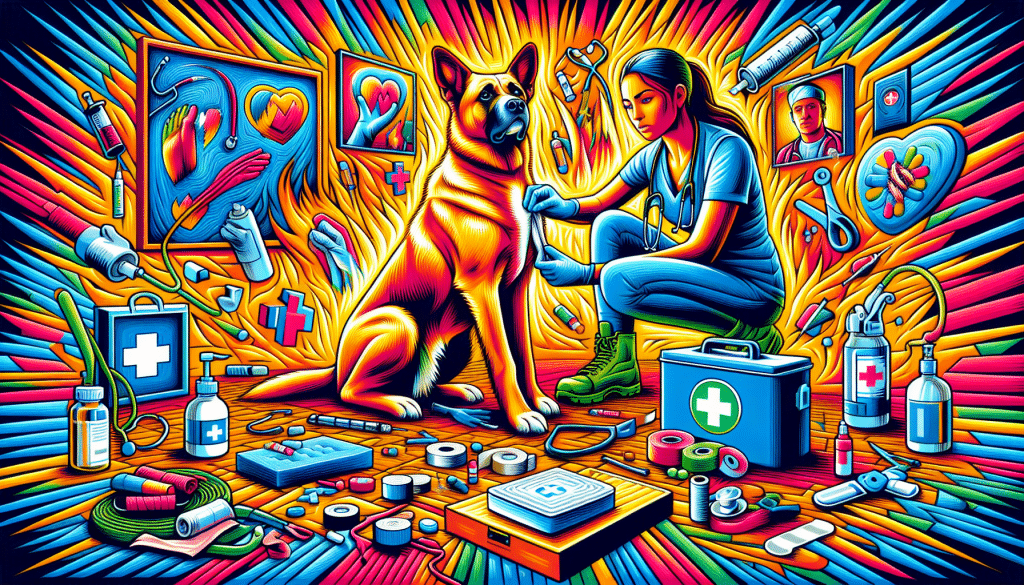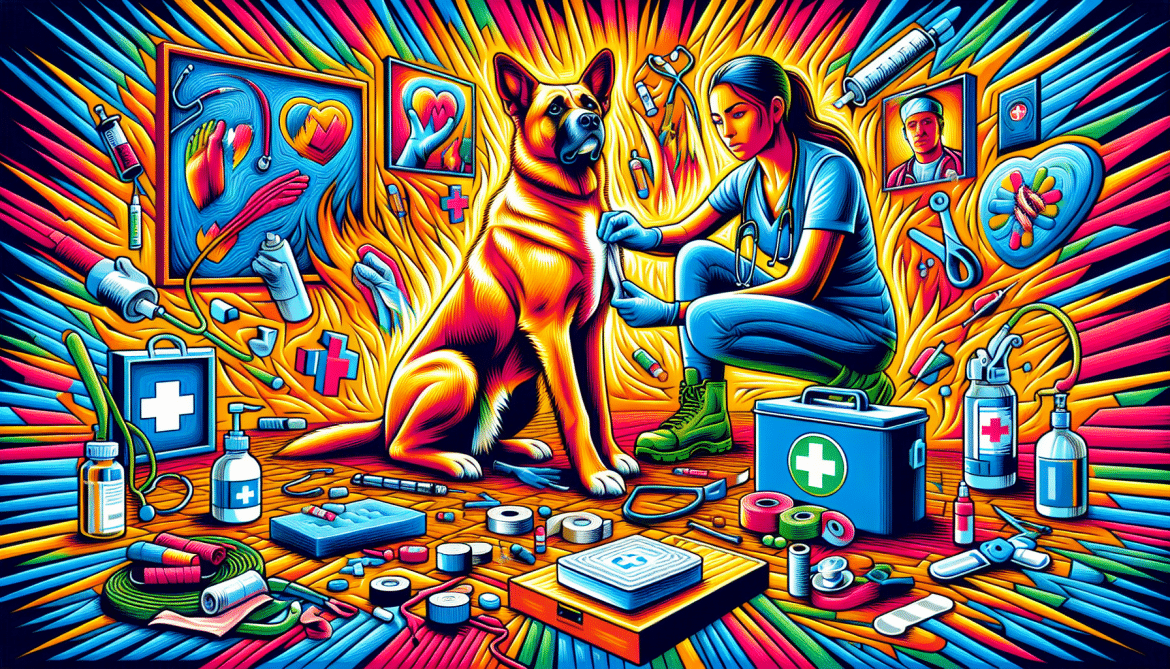In today's article, you will discover the crucial role that dog first aid plays in the life of every owner. As a responsible dog owner, it is essential to have a solid understanding of the basics of first aid for our beloved furry friends. From minor injuries to potentially life-threatening situations, being equipped with the knowledge and skills to provide immediate care can make all the difference in ensuring the well-being of our canine companions. So join us as we explore the importance of dog first aid and why it is an essential skill for every owner to possess.

This image is property of images.pexels.com.
Why Dog First Aid is Important
Taking care of your furry companion involves more than just feeding them and giving them lots of love. As a responsible dog owner, it is crucial to be prepared for any accidents or emergencies that may arise. That's where dog first aid comes in. Having a basic understanding of dog first aid can not only prevent emergency situations but also save your dog's life when the unexpected happens. So, let's dive into why dog first aid is important and how it can benefit both you and your beloved canine friend.
Preventing Emergency Situations
We all want our dogs to stay healthy and happy, but accidents can happen at any time. By having knowledge of dog first aid, you can actively prevent emergency situations from escalating. Understanding the basics of dog first aid allows you to spot potential risks and take immediate action. For example, you might notice your dog showing signs of heatstroke during a hot summer day, and by recognizing this early, you can provide them with immediate cooling measures to prevent a life-threatening situation. By being proactive and equipped with the right knowledge, you can potentially avoid emergencies altogether and keep your four-legged friend safe and sound.
Being Prepared for Accidents
No matter how cautious you are, accidents can still occur. It's essential to be prepared for these situations, as having the necessary skills and tools at hand can make the difference between life and death for your furry companion. Dog first aid equips you with the knowledge and techniques to handle injuries, wounds, and other emergency situations until professional veterinary help is available. Imagine your dog gets a deep cut during a hike or swallows something they shouldn't have. With the right first aid knowledge and supplies, you can take immediate action, providing comfort and care to your dog while minimizing the risks involved. Being prepared can make all the difference when it comes to your dog's well-being.
Saving Your Dog's Life
The most significant reason why dog first aid is important is that it can save your dog's life in critical situations. Accidents happen when we least expect them, and in those moments, every second counts. By knowing how to perform dog CPR, for example, you can potentially revive your dog if their heart stops. Similarly, understanding the Heimlich maneuver can help you dislodge an object stuck in their throat, preventing choking. These techniques, when administered correctly and promptly, can be life-saving. By equipping yourself with the knowledge of dog first aid, you become your dog's first line of defense, giving them a higher chance of survival in emergency situations.
Understanding the Basics of Dog First Aid
Having a solid grasp of the basics of dog first aid is key to being prepared for those unexpected moments. By recognizing common symptoms, knowing your dog's vital signs, and understanding handling and restraint techniques, you'll have a strong foundation in providing the necessary care for your furry friend.
Recognizing Common Symptoms
Dogs can't communicate in the same way humans do, so it's essential to be aware of the common symptoms that may indicate something is wrong. Signs such as excessive panting, difficulty breathing, vomiting, diarrhea, lethargy, and loss of appetite can be indications of various underlying issues. By observing your dog's behavior and monitoring any changes, you'll be better equipped to identify potential health concerns. Recognizing these symptoms early allows for timely intervention and can prevent minor issues from developing into more severe problems.
Knowing Your Dog's Vital Signs
Being familiar with your dog's vital signs is crucial in determining their overall health and spotting any abnormalities. Pay attention to their heart rate, pulse, respiratory rate, and body temperature. The normal ranges can vary depending on the size, breed, and age of your dog. By regularly monitoring and recording their vital signs when they are healthy, you can establish a baseline. This baseline becomes a valuable reference point to compare against during times of illness or injury, helping you gauge the severity of a potential emergency.
Handling and Restraint Techniques
In emergency situations, ensuring the safety of both you and your dog is of utmost importance. Learning proper handling and restraint techniques is essential to provide effective first aid without causing unnecessary stress or harm to your dog. Understanding how to safely secure your dog, immobilize limbs, and muzzle them if necessary can prevent further injury and ensure a smooth and efficient process of administering first aid. By practicing these techniques in a controlled environment, you can feel more confident and competent when faced with a real-life emergency.

This image is property of images.pexels.com.
Creating a Dog First Aid Kit
Having a well-stocked and organized dog first aid kit can be a lifesaver in emergency situations. It allows you to have essential supplies readily available when your dog needs immediate care. Here's what you need to include in your dog first aid kit:
Essential Supplies to Include
- Sterile gauze pads and bandages for wound dressing
- Non-stick adhesive tape to secure bandages
- Antiseptic cleansing solution or wipes to clean wounds
- Scissors, tweezers, and a tick removal tool
- Digital thermometer to check your dog's temperature
- Disposable gloves for protection against infections
- Styptic powder to stop bleeding from minor cuts or broken nails
- Saline solution to flush out dirt or debris from your dog's eyes
- Muzzle or fabric strips for restraint (only if necessary)
- Emergency contact numbers, including your veterinarian and a 24-hour animal hospital
Keeping the Kit Organized and Accessible
Ensure that your dog first aid kit is organized and easily accessible. It's a good idea to keep it in a sturdy container that is labeled and waterproof to protect the contents from damage. Store the kit in a location that is known to all family members and easily reachable during an emergency. Additionally, regularly check the kit for expired items and replace any supplies that have been used or are running low.
Regularly Checking and Restocking the Kit
Just like any other supplies, the items in your dog first aid kit have expiration dates. It's important to periodically check and replace expired items to ensure their effectiveness when needed. Consider setting a reminder to check your kit every six months and restock any necessary items. This way, you can be confident that your first aid kit is always ready and fully equipped to handle any emergency situations that may arise.
Common Dog First Aid Techniques
Having a repertoire of common dog first aid techniques can empower you to provide immediate and potentially life-saving care to your dog during emergencies. From performing CPR for dogs to knowing how to handle wounds and bleeding effectively, here are some essential techniques to familiarize yourself with:
CPR for Dogs
Cardiopulmonary resuscitation (CPR) can be a vital technique in saving your dog's life if their heart stops beating. The basic steps involve checking for responsiveness, performing chest compressions, and administering rescue breaths. CPR for dogs is slightly different from CPR for humans, so it's important to learn the proper technique specific to dogs.
Heimlich Maneuver for Choking
Dogs, especially those who are curious and love to explore, are prone to choking on objects or food. Knowing how to perform the Heimlich maneuver can dislodge an obstruction from your dog's airway and restore their ability to breathe. By using a combination of abdominal thrusts and back blows, you can effectively clear the pathway and potentially save your dog from a choking emergency.
Treating Wounds and Bleeding
Wounds and bleeding can occur from various accidents or injuries. Knowing how to properly clean and dress wounds can prevent infections and aid in the healing process. Additionally, understanding different types of bleeding and how to control them, such as applying direct pressure or using a tourniquet in extreme cases, can be crucial in providing immediate care to your dog.

This image is property of images.pexels.com.
Dealing with Allergic Reactions and Poisonings
Allergic reactions and poisonings can pose serious threats to your dog's health and require swift action. Understanding how to identify allergic reactions and what to do in case of poisoning can make a significant difference in providing the necessary care for your four-legged friend.
Identifying Allergic Reactions
Allergies can manifest in various ways in dogs, including itching, swelling, hives, difficulty breathing, vomiting, or diarrhea. It's important to recognize these signs early on and distinguish them from other health issues. By pinpointing the cause of the allergic reaction and removing your dog from the allergen, you can help alleviate their distress and prevent the situation from worsening.
Administering Antihistamines or Epinephrine
If your dog experiences severe allergic reactions, such as anaphylaxis, immediate medical intervention may be necessary. In these cases, administering antihistamines or epinephrine (under veterinary guidance) can help counteract the allergic response and potentially save your dog's life. However, it's crucial to consult with a veterinarian before administering any medication to ensure the correct dosage and avoid potential complications.
Steps to Take in Case of Poisoning
Poisoning can occur when your dog ingests toxic substances such as household cleaners, certain plants, or medications. It's essential to act promptly and efficiently in these situations. Start by contacting your veterinarian or a pet poison control hotline for guidance. They can provide you with specific instructions to induce vomiting, administer activated charcoal, or other necessary steps to minimize the absorption of the toxin. Remember to carefully follow their instructions and seek immediate professional help to ensure the best possible outcome for your dog.
Managing Heatstroke and Hypothermia
Extreme temperatures can seriously affect your dog's health. Understanding how to recognize and appropriately manage heatstroke and hypothermia is crucial in keeping them safe and preventing severe complications.
Recognizing Signs of Heatstroke
Heatstroke can occur when your dog's body temperature rises dangerously high. Watch out for symptoms such as excessive panting, drooling, weakness, rapid heartbeat, and collapse. If you suspect heatstroke, it's vital to act quickly. Move your dog to a cooler environment, provide them with cool water, and gradually cool them down with wet towels or a fan. However, it's important to avoid using ice-cold water, as this can cause further complications.
Providing Immediate Cooling
In cases of heatstroke, it's crucial to provide immediate cooling to your dog's body. Applying cool, wet towels to their head, neck, and body can help lower their temperature gradually. You can also place them near a fan or in an air-conditioned room to aid in the cooling process. It's important to closely monitor their vital signs and body temperature throughout the cooling process and seek veterinary assistance as soon as possible.
Preventing and Treating Hypothermia
During cold weather or in certain situations, hypothermia can occur when your dog's body temperature drops dangerously low. Signs such as shivering, lethargy, pale gums, and difficulty walking may indicate hypothermia. To prevent hypothermia, ensure your dog has access to warm shelter and limit their exposure to cold temperatures. If you suspect hypothermia, gently warm them using blankets or towels, but avoid using direct heat sources like heating pads, as this can cause burns. Monitor their body temperature and seek veterinary care immediately to prevent further complications.

Handling Bone Fractures and Sprains
Accidents or falls can sometimes result in bone fractures or sprains for your dog. Understanding how to provide initial care and seek proper veterinary attention is crucial in ensuring their proper healing and minimizing pain.
Stabilizing Injured Limbs
If you suspect your dog has a bone fracture or sprain, it's essential to stabilize the injured limb to prevent further damage. You can achieve this by using improvised splints or bandages to immobilize the limb. However, it's important to be cautious and not exert too much pressure or restrict blood flow. Proper stabilization will help minimize pain and prevent additional trauma.
Applying Splints or Bandages
When applying splints or bandages, it's important to be mindful of the correct technique to ensure the injured limb is adequately supported. Avoid wrapping too tightly, as this can lead to circulation issues, but make sure the splint or bandage is secure enough to prevent movement. Remember that splints and bandages are temporary measures, and seeking immediate veterinary care is essential for a proper diagnosis and treatment plan.
Seeking Veterinary Care
When it comes to bone fractures and sprains, always seek veterinary care after administering initial first aid. A professional evaluation can determine the extent of the injury and provide appropriate treatment options, such as X-rays, pain management, or even surgery, if necessary. Prompt veterinary care will ensure that your dog receives the best possible care and the highest chance of a successful recovery.
Responding to Seizures and Convulsions
Seizures and convulsions can be distressing to witness, but knowing how to respond and provide comfort to your dog during these episodes is essential.
Creating a Safe Environment
The first step in responding to seizures and convulsions is to create a safe environment for your dog. Clear the surrounding area of any sharp objects or obstacles that could potentially harm them in case of uncontrollable movements. Cushioning the surroundings with pillows or blankets can further minimize the risk of injury during the seizure.
Monitoring Seizure Duration
During a seizure, it's important to monitor its duration. Generally, seizures should not last longer than a few minutes. If the seizure goes on for an extended period, it may become a medical emergency, and immediate veterinary assistance should be sought. It's also essential to observe and take note of any changes in the seizure pattern, as this information can be valuable for your vet's evaluation.
Providing Comfort and Support
During and after a seizure, it's crucial to provide comfort and support to your dog. Stay calm and speak in soothing tones to help reassure them. Avoid restraining your dog during the seizure, as this may cause additional stress. Once the seizure subsides, ensure your dog has access to fresh water and a quiet, comfortable space to rest. Keeping a record of the seizure episode and discussing it with your veterinarian will aid in the diagnosis and management of any underlying conditions.
Knowing When to Seek Veterinary Care
While dog first aid is essential in providing immediate care, it's important to recognize the limitations of first aid and know when to seek professional veterinary care.
Recognizing Emergencies
Although first aid techniques can be life-saving, some situations require the immediate attention of a veterinarian. Severe or uncontrollable bleeding, difficulty breathing, sudden collapse, prolonged seizures, or any other situation that puts your dog's life at immediate risk should prompt you to seek professional help without hesitation. Identifying emergencies promptly and acting swiftly can mean the difference between life and death for your furry friend.
Understanding the Limitations of First Aid
While first aid can provide crucial initial care and stabilization, it cannot replace the expertise and resources of a veterinary professional. The purpose of dog first aid is to bridge the gap between an accident or emergency and professional veterinary care. Always remember that first aid is meant to be temporary and that the expertise of a veterinarian is necessary for a proper diagnosis and treatment plan.
Contacting and Transporting your Dog to the Vet
In situations requiring veterinary care, it's vital to contact your veterinarian or a 24-hour animal hospital immediately. Explain the situation clearly and follow their instructions for transportation and arrival. Stay calm and ensure your dog's safety while traveling to the vet, keeping them as comfortable as possible. If needed, enlist the help of another person to assist with transportation, especially if your dog is large or unable to walk.
Keeping Your Dog Safe and Preventing Accidents
While being prepared and knowledgeable in dog first aid is crucial, it's equally essential to focus on preventing accidents and keeping your dog safe and healthy.
Proper Supervision and Training
One of the most effective ways to prevent accidents is through proper supervision and training. Always keep an eye on your dog, especially in new or potentially hazardous environments. Teach them basic commands and obedience training to ensure they respond to your cues when situations arise. By providing them with proper training and supervision, you can minimize the risks of accidents and create a safe environment for your furry friend.
Dog-Proofing your Home and Garden
Dog-proofing your home and garden is another crucial aspect of accident prevention. Remove any toxic or hazardous substances and keep them out of your dog's reach. Secure loose wires and cords, remove small objects that can be swallowed, and fence off any areas that may pose a threat, such as swimming pools or garden chemicals. Regularly inspect your home and garden for potential hazards and address them promptly.
Maintaining Regular Veterinary Check-Ups
Prevention is always better than cure, and regular veterinary check-ups play a vital role in keeping your dog healthy and identifying any potential issues early on. Schedule routine visits with your veterinarian for vaccinations, dental care, and overall wellness examinations. These regular check-ups allow your vet to assess your dog's health, provide preventive measures, and offer valuable advice for their specific needs. By maintaining regular veterinary care, you can stay proactive in promoting your dog's well-being and preventing future emergencies.
In conclusion, dog first aid is an essential skill for every responsible dog owner. By understanding the basics of dog first aid, creating a well-stocked first aid kit, and familiarizing yourself with common techniques, you can be prepared for emergencies and potentially save your dog's life. Additionally, recognizing the signs of allergic reactions, managing heatstroke and hypothermia, and knowing how to handle bone fractures and sprains are crucial aspects of providing immediate care. Understanding when to seek veterinary care, as well as preventing accidents through proper supervision, dog-proofing your home, and maintaining regular veterinary check-ups, completes the comprehensive approach to ensuring your dog's safety and well-being. By investing in dog first aid knowledge and taking preventative measures, you'll be equipped to handle any situation that comes your way, ultimately leading to a healthier and happier life for both you and your beloved canine friend.



1 comment
[…] a dog owner, you might not realize just how crucial dental care is for your furry friend. Just like humans, […]
Comments are closed.